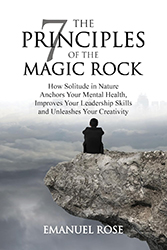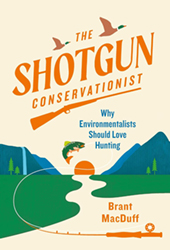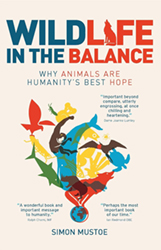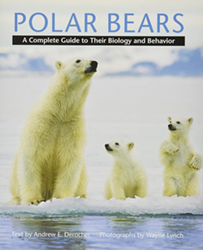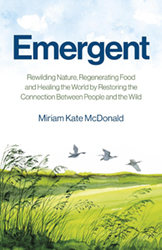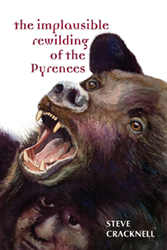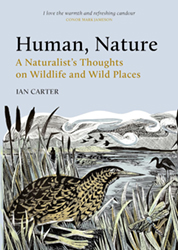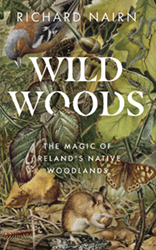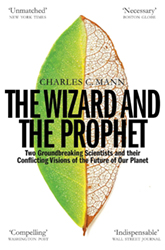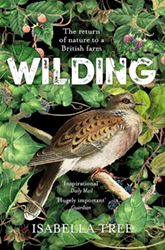Welcome to Tommy’s Outdoors library where you can find my list of book recommendations. I have reviewed or recorded a podcast about most of these books. In some cases both. You can find my reviews and interviews under this link.
And if you buy a book (or any other product) using one of the links below, I will get a small commission which will help me greatly in running the podcast (your cost won’t change).
The 7 Principles of the Magic Rock by Emanuel Rose
The Magic Rock is a self-help book focused on spending time in nature to improve mental health, well-being, leadership, relationships, and creativity. The author demonstrates that technology overuse has contributed to a mental health crisis, leading to issues like anxiety, depression, and sleep disruption. Spending time outdoors will counteract these effects by reducing stress, fostering mindfulness, and facilitating human connection.
A Flicker in the Water by Bob Gonzalez
If you’re yearning for tales about adventure and fun on the open sea, look no further!
The crew welcomes you aboard the Twister, one of the finest fishing vessels in the Gulf of Mexico, as the search is on for the big ones that legends are made of. Blue marlin, yellowfin tuna, swordfish, and more are waiting to be caught, just so long as Bob and his friends have the strength to reel them in.
The Shotgun Conservationist by Brant MacDuff
Picture a hunter. Who comes to mind? Millionaire playboys or big truck owning folks? Maybe so, but there’s more to it. Because if you love nature, value sustainability, abhor the pollution and inhumanity of factory farms, you could be a hunter in the making. And if you’ve never even considered hunting, The Shotgun Conservationist reveals all the reasons you should. Brant MacDuff makes us rethink who hunts and why. Growing up an animal lover with no hunting background, MacDuff himself would seem an unlikely advocate.
Reflections by Mark Avery
In this informed, incisive and passionate commentary on the state of nature and conservation, Mark Avery reflects on our relationship with the wildlife around us. From the cats that pass through his garden to the chronic decline of farmland wildlife, from the Pasqueflowers he visits every spring to the proportion of national income devoted to saving nature – everything is connected, and everything is considered.
Wildlife in the Balance by Simon Mustoe
Wildlife in the Balance offers a new perspective, a sly glance from the side, an initial dose of cynicism and preparation to rethink what you may have learnt about concepts like natural selection, evolution, ecosystems and conservation. Things don’t quite work like you were taught at school or led to believe by decades of popular science.
Polar Bears: A Complete Guide to Their Biology and Behavior by Andrew E. Derocher, Wayne Lynch
The polar bear, king of the Arctic, is one of the world’s most recognizable animals. Images of the majestic beasts roaming across the ice cap, plunging into frigid waters, and playing with furry cubs have come to symbolize the beauty and grandeur of the Arctic.
Emergent by Miriam Kate McDonald
In Emergent, Miriam McDonald explores the relationships that bind our world together. It is by reintegrating lost species with historic ranges that rewilding reignites the miraculous dance of life across landscapes. It is through reforming severed relationships that regenerative farmers build soil, produce nutrient-dense food and foster a renewed sense of kinship and community.
Treated Like Animals by Alick Simmons
You don’t have to be an animal rights activist to take an interest in how we treat other creatures. All of us are complicit because all of us, with few exceptions, use animals in some way. How we define ‘use’ or exploitation should be broad: everything from enjoying a steak or poached eggs, to riding a horse, to keeping a cat as a pet. Animal use is so deeply engrained in our daily lives that we barely notice it.
In Search of One Last Song by Patrick Galbraith
In this beautiful and thought-provoking blend of nature and travel writing Patrick Galbraith sets off across Britain on a journey that may well be his last chance to see some of our disappearing birds. Along the way, from Orkney to West Wales, from the wildest places to post-industrial towns, he meets a fascinatingly eclectic group of people who in very different ways are on the front line of conservation, tirelessly doing everything they can to save ten species teetering dangerously close to extinction.
Rhythms of Nature by Ian Carter
Time outdoors is always well spent. It raises the spirits, sparks the imagination and, as research increasingly shows, measurably improves our physical and mental wellbeing. Rhythms of Nature celebrates this fundamental relationship with the natural world, and considers some ways we might rediscover it.
The Saviour Fish by Mark Weston
Lake Victoria was once one of the most biodiverse places on Earth, but a predator released into its waters by East Africa’s British colonisers has left a trail of destruction in its wake. The lives of millions of people have been upended, as a fateful confluence of overfishing, pollution and deforestation has triggered one of history’s greatest mass extinctions.
Cries of the Savanna by Sue Tidwell
Waking to her husband’s alarmed whisper, “Honey, get ready to run” was never in Sue Tidwell’s vision of Africa. Nor was skulking through snake-infested terrain or lying terror-stricken as the cries of lions and hyenas cut through the walls of her tent. Tidwell, a non-hunter deeply troubled by the concept of hunting Africa’s iconic wildlife, finds herself a reluctant sidekick on an epic 21-day big game hunting safari deep in the wilds of Tanzania
The Implausible Rewilding of the Pyrenees by Steve Cracknell
The return of large predators might help to reinvigorate nature. But are wild animals like wolves and bears compatible with livestock farming? Will their arrival destroy mountain communities? Unable to decide on the issues, Steve Cracknell climbs up to the isolated summer pastures of the Pyrenees to talk with those most concerned: the shepherds. He also meets hunters and ecologists – and goes looking for bears…
Beak, Tooth and Claw: Living with Predators in Britain by Mary Colwell
Mary Colwell travels across the UK and Ireland to encounter the predators face to face. She watches their lives in the wild and discovers how they fit into the landscape. She talks to the scientists studying them and the wildlife lovers who want to protect them. She also meets the people who want to control them to protect their livelihoods or sporting interests.
Human, Nature: A Naturalists Thoughts on Wildlife and Wild Places by Ian Carter
What does it mean to be a part of―rather than apart from―nature? This book is about how we interact with wildlife and the ways in which this can make our lives richer and more fulfilling. But it also explores the conflicts and contradictions inevitable in a world that is now so completely dominated by our own species.
When Accidents Happen: Managing Crisis Communication as a Family Liaison Officer by Moose Mutlow
When Accidents Happen introduces how to meet the challenges of being a Family Liaison Officer and offers a reference to help support experienced FLO’s in their role. Backing up suggestions with examples from the field the text maps an approach to being a FLO, acknowledging the potential strengths and weaknesses of the position and defining clear parameters for FLO’s to successfully operate within.
Remarkable Creatures: a guide to some of Ireland’s disappearing animals by Aga Grandowicz
Ireland is home to thousands of amazing animals, but things are changing in our environment, and some of our remarkable creatures are struggling to survive. This book will take you on a journey of discovery, sharing fascinating facts about our most endangered species, activities to help you understand more about their habitats and tips on how you can help protect them. The future of our animals depends on our actions today – so let’s play our part and do the best we can.
Time nor Tide: Ireland & Climate Change by Ben Harkin
Drawing on research from Ireland and across the world, this book explains what we can expect for the future in Ireland with climate change, and how we can move to limit the worst impacts. Combining studies and stories, Ben Harkin explains how we can use the technology we already have to bring our country to being carbon neutral, while building a better future for all.
Whittled Away: Ireland’s Vanishing Nature by Pádraic Fogarty
‘Ireland’s natural heritage is being steadily whittled away by human exploitation, pollution and other aspects of modern development. This could represent a serious loss to the nation.’ Irish Government Report, 1969 This urgent call for intervention to prevent the loss of our natural heritage is taken from a government report published in June 1969. Since then, nature in Ireland has continued to disappear at an alarming rate.
Cycling Kerry: Great Road Routes by Donnacha Clifford and David Elton
With some of Ireland’s most beautiful and untamed scenery, 400km of rugged coastline and enticingly peaceful roads, what better way to explore County Kerry than by bike? In a county famous for its climbs, some of the country’s most spectacular ascents, summit views and descents feature, including the Conor Pass and Ballaghbeama. Each route description is illustrated with colour maps, photos, a gradient graph and key facts and statistics.
Wildwoods: The Magic of Ireland’s Native Woodlands by Richard Nairn
Wildwoods is a fascinating account of his journey over a typical year. Along the way, he uncovers the ancient roles of trees in Irish life, he examines lost skills such as coppicing and he explores new uses of woodlands for forest schools, foraging and rewilding. Ultimately, Wildwoods inspires all of us to pay attention to what nature can teach us.
The Wizard and the Prophet: Science and the Future of Our Planet by Charles C. Mann
In forty years, the population of the Earth will reach ten billion. Can our world support so many people? What kind of world will it be? In this unique, original and important book, Charles C. Mann illuminates the four great challenges we face – food, water, energy, climate change – through an exploration of the crucial work and wide-ranging influence of two little-known twentieth-century scientists, Norman Borlaug and William Vogt.
Wilding: The Return of Nature to a British Farm by Isabella Tree
Forced to accept that intensive farming on the heavy clay of their land at Knepp was economically unsustainable, Isabella Tree and her husband Charlie Burrell made a spectacular leap of faith: they decided to step back and let nature take over. Thanks to the introduction of free-roaming cattle, ponies, pigs and deer – proxies of the large animals that once roamed Britain – the 3,500 acre project has seen extraordinary increases in wildlife numbers and diversity in little over a decade.
Islands of Abandonment: Life in the Post-Human Landscape by Cal Flyn
This book explores the extraordinary places where humans no longer live, to give us a possible glimpse of what happens when mankind’s impact on nature is forced to stop. From Tanzanian mountains to the volcanic Caribbean, the forbidden areas of France to the mining regions of Scotland, Flyn brings together some of the most desolate, eerie, ravaged and polluted areas in the world – and shows how, against all odds, they offer our best opportunities for environmental recovery.
White Hunters: The Golden Age of African Safaris by Brian Herne
“White Hunters” is the story of 70 years of African adventure, danger and romance. It recreates the legendary big-game safaris led by Selous and Bell and the daring ventures of early hunters into unexplored territories. The golden age of the African safari is laid bare in this survey of the continent’s most storied white hunters, from real-life men who inspired Isak Dinessen’s “Out of Africa” to Cape-to-Cairo Grogan, who walked 4000 miles for the love of a woman. Witnesses to the richest wildlife spectacle on earth, these hunters were the first conservationists.
Coyote America: A Natural and Supernatural History by Dan Flores
Coyote America is both an environmental and a deep natural history of the coyote. It traces both the five-million-year-long biological story of an animal that has become the “wolf” in our backyards, as well as its cultural evolution from a preeminent spot in Native American religions to the hapless foil of the Road Runner. A deeply American tale, the story of the coyote in the American West and beyond is a sort of Manifest Destiny in reverse.
Meat Eater: Adventures from the Life of an American Hunter by Steven Rinella
Steven Rinella grew up in Twin Lake, Michigan, the son of a hunter who taught his three sons to love the natural world the way he did. As a child, Rinella devoured stories of the American wilderness, especially the exploits of his hero, Daniel Boone. He began fishing at the age of three and shot his first squirrel at eight and his first deer at thirteen. He chose the colleges he went to by their proximity to good hunting ground, and he experimented with living solely off wild meat. As an adult, he feeds his family from the food he hunts.
Tommy’s Outdoors is a participant in the Amazon Services LLC Associates Program, an affiliate advertising program designed to provide a means for sites to earn advertising fees by advertising and linking to Amazon.co.uk

